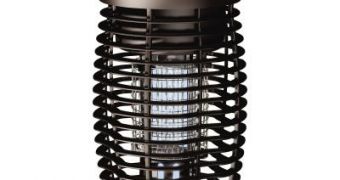While the summertime brings us a lot of pleasures, especially in terms of weather, it also comes with a large variety of annoying insects, amongst which the mosquito, a never-ending source of discomfort and ultimately pain. Most of the time, a pesticide will do just fine in keeping these hungry bugs at a distance, although sometimes people prefer using what is known as an electrical-discharge insect-control system, more commonly known as a bug zapper.
This simple and effective device was invented more than seven decades ago and is one of those devices that hardly need any improvements with the passing of time. A typical bug zapper consists of a housing casing, a light source, a discharge medium and a transformer.
The housing casing of the device is generally made out of insulating material or a grounded conductive metal and is destined to hold all the other components of the bug zapper. The light source is usually a fluorescent light, placed in the center of the housing casing. Electrified wire meshes separated several millimeters from each other and surrounding the light source create the discharge medium, while a step-up transformer is used to provide the electrical power required to electrify the discharge medium.
As we all know, insects are drawn to light, which is used as a lure in the case of bug zappers. Since the electrified wire meshes of the device are powered with 2,000 volts from the step-up transformer and the distance between them is about the size of a typical insect, mosquitoes and other bugs trying to pass through them to get to the light are basically vaporized by the electrical current traversing their bodies.
Disadvantages
The main design flaw of the bug zappers is that they lure any type of insects, most of the time killing harmless ones, thus creating a certain unbalance in the surrounding environment. The truth is that the vast majority of bug zappers don't have even the smallest effect on mosquitoes, because they are not attracted to ultraviolet light. This is why some designs need to compensate through the release of certain compounds to lure mosquitoes to their deaths.
Others models try to attract mosquitoes by taking advantage of their guiding methods, such as emitting carbon dioxide gas, Octenol (a mosquito pheromone) and moisture.

 14 DAY TRIAL //
14 DAY TRIAL //